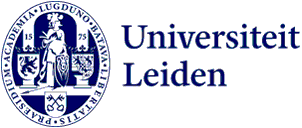Description
This course introduces some of the central issues in the field of political communication from a comparative perspective. We concentrate on the United States and the People’s Republic of China as primary cases, but students are welcome to bring up examples from other countries.
The course covers two overlapping themes: First, we discuss the relationship between communication and democracy. What is democracy? Are so-called “non-democracies” more than a residual category? What is the role of communication in democracy? What is the role of communication for democratisation? Second, we examine different forms of political communication, including the mass media and citizen deliberation. What is the role of mass media in politics and how do the media affect citizens’ political attitudes? How do citizens talk about politics in an existing or emerging public sphere? During the discussion we will critically examine the evidence and methods presented and generate new hypotheses and research topics.
The primary goal of the course is to introduce students to the major themes, debates, and puzzles in the study of political communication. A second goal is to allow students to grow familiar with some of the methodological challenges of studying political communication (through evaluation and critique of the text) and to develop a research proposal of their own that sets out a research question and a research plan for answering that question. The course is designed around engaged and lively debate on the issues; therefore, student participation is absolutely necessary. Each student will have an opportunity to lead the discussion during the semester.
Students do not need to have any previous knowledge about China or the US. However, students in the past have found it helpful to take a general introductory course on Chinese politics beforehand (for example, “Political Reform in East Asia”).
Methods of instruction
Lectures, discussion of assigned readings.
Study material
Literature (approx. 1000 pages):
Selected journal articles and book chapters.
The following book should be purchased. The remaining readings are available electronically.
Hamilton, James (2004). All the News That’s Fit to Sell : How the Market Transforms Information into News. Princeton, N.J., Princeton University Press.
Examination
Research Proposal 40%, Short essays 30%; Participation 30%.
Time table
Tuesday September 2, till October 14, 13.00-15.00 p.m. in Ch04
Tuesday October 21, 13.00-15.00 p.m. in Ch10 and
Friday September 5, till October 24, 13.00-15.00 p.m. in SA23 (except 5/9 5A37)
